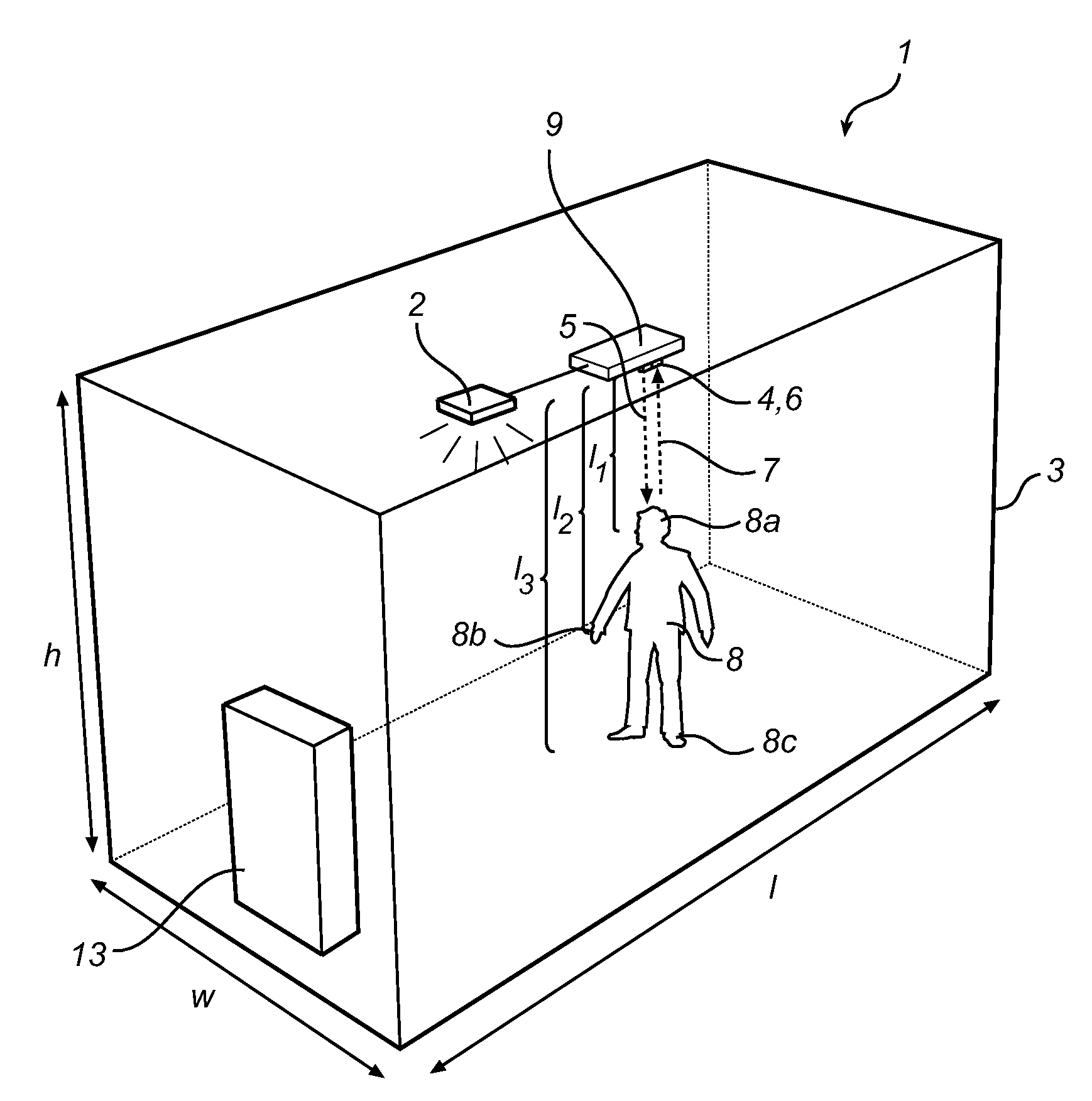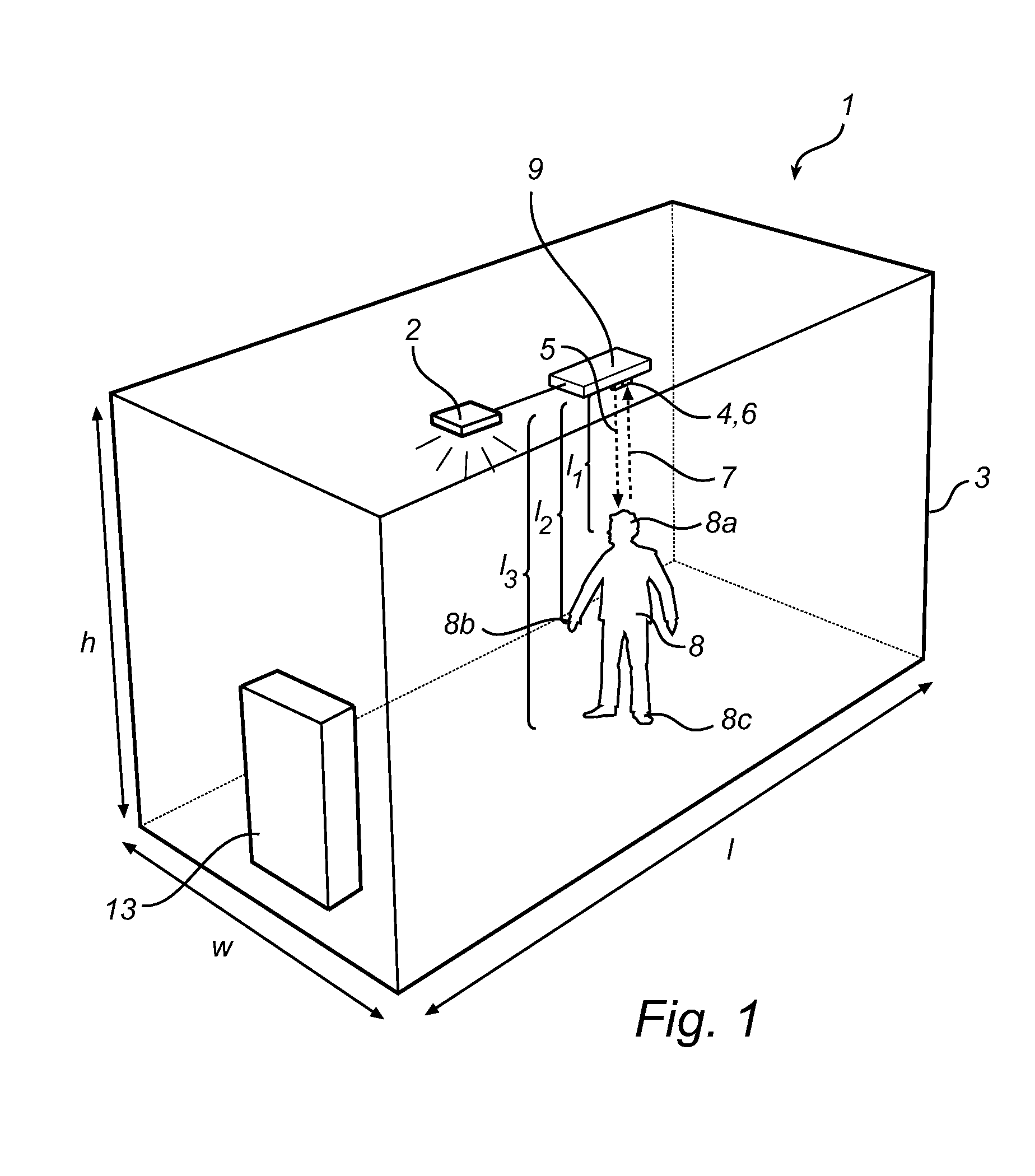Control unit and method for lighting control
a control unit and lighting technology, applied in the direction of lighting devices, lighting sources, electrical devices, etc., can solve the problems of inconvenient manual operation to switch on or off each one of the plurality of lamps, inconvenient manual operation, undesired lighting control, etc., to achieve suitable/convenient lighting, not convenient to set for the target(s), and suitable/convenient lighting
- Summary
- Abstract
- Description
- Claims
- Application Information
AI Technical Summary
Benefits of technology
Problems solved by technology
Method used
Image
Examples
Embodiment Construction
[0036]In the following description, the present invention is described with reference to a control unit controlling luminance in a space and a lighting control system for controlling a lighting function of a light source.
[0037]FIG. 1 is a schematic illustration of a lighting control system 1 for controlling a lighting function of an illumination device 2. Here, the space 3 is exemplified as a room 3 with length 1, width w and height h, and the illumination device 2 is shown as a single light source 2 positioned in the ceiling of the room 3. However, it will be appreciated that the illumination device 2 may comprise a plurality of light sources 2 which further may be distributed within the space / room 3.
[0038]A control unit 9 is arranged in the space 3 for controlling the luminance, wherein the control unit 9 is further configured to estimate a three-dimensional (3D) location (l1-3) of the respective targets 8a-c (in the following, the 3D locations will be indicated in the figures as ...
PUM
 Login to View More
Login to View More Abstract
Description
Claims
Application Information
 Login to View More
Login to View More - R&D
- Intellectual Property
- Life Sciences
- Materials
- Tech Scout
- Unparalleled Data Quality
- Higher Quality Content
- 60% Fewer Hallucinations
Browse by: Latest US Patents, China's latest patents, Technical Efficacy Thesaurus, Application Domain, Technology Topic, Popular Technical Reports.
© 2025 PatSnap. All rights reserved.Legal|Privacy policy|Modern Slavery Act Transparency Statement|Sitemap|About US| Contact US: help@patsnap.com



